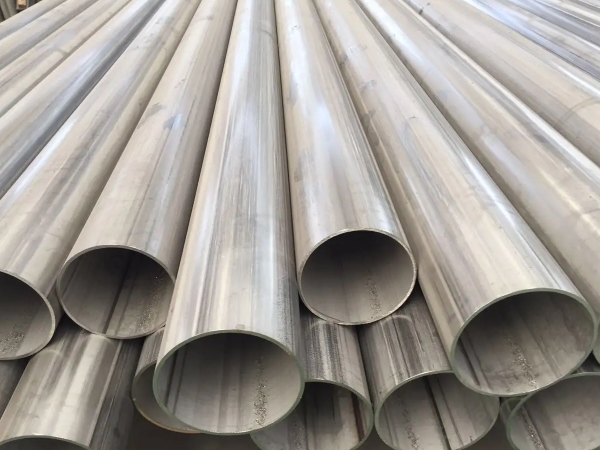How to Pretreat the Surface of 304 Stainless Steel Pipe?
Date:2022-05-05View:1254Tags:Stainless Steel Pipe, Surface Pretreatment
Stainless steel pipe is a kind of hollow long cylindrical steel, which is mainly used as a pipeline for conveying fluids. Widely used in petroleum, chemical, medical, food, light industry, mechanical instrumentation and other industrial pipelines and mechanical structural components. The stainless steel pipe is made of acid-resistant and heat-resistant steel billets, which are heated, perforated, sizing, hot-rolled and cut.
Pretreatment of 304 stainless steel pipe surface
1. Before shot peening and rust removal, the 304 stainless steel pipe should be preheated to remove moisture. The preheating temperature is 40℃~60℃;
2. Derusting should reach Sa2.5 level in GB/T8923 "Steel Surface Corrosion Grade and Derusting Grade before Coating", and the depth of anchor pattern on the surface of 304 stainless steel pipe is 40μm ~ 100μm;
3. The rust and dust remaining on the surface of the 304 stainless steel pipe should be cleaned up;
4. Spraying should be carried out within 4 hours after surface pretreatment.

In addition, the methods of galvanizing the surface of 304 stainless steel pipes mainly include two categories: hot-dip galvanizing and electro-galvanizing. Hot-dip galvanizing includes wet method, dry method, lead-zinc method, redox method, etc.
The main difference between different galvanizing methods of hot-dip galvanizing lies in which method is used to activate the surface of the pipe body to improve the quality of galvanizing after the 304 stainless steel pipe is acid dipped and cleaned. The dry method and redox method are mainly used in the production.
The surface of the zinc layer of electro-galvanizing is very smooth and dense, and the structure is uniform; it has good mechanical properties and corrosion resistance; the zinc consumption is 60% to 75% lower than that of hot-dip galvanizing. Electrogalvanizing is technically complicated to a certain extent, but this method must be used for single-sided coating, double-sided coating with different thicknesses of inner and outer surfaces, and 304 stainless steel pipe galvanizing.
Why does 304 stainless steel pipe rust?
1. Chloride ions exist in the use environment
Chloride ions are widely present, such as salt, sweat, seawater, sea breeze, soil and so on. In the presence of chloride ions, stainless steel corrodes quickly, even more than ordinary low carbon steel.
Therefore, there are requirements for the use environment of stainless steel, and it needs to be wiped frequently to remove dust and keep it clean and dry.
2. The surface of the stainless steel tube accumulates dust containing other metal elements or the attachments of dissimilar metal particles. In the humid air, the condensed water between the attachments and the stainless steel connects the two into a micro-battery, which triggers electrochemical reactions. As a result, the protective film is destroyed, causing corrosion.
3. The surface of the stainless steel pipe adheres to the juice of the agricultural production system (such as melons, vegetables, noodle soup, sputum, etc.), which constitutes the acid of the agricultural production system in the presence of water and oxygen, and forms the corrosion of the metal surface of the agricultural production system acid for a long time.
4. In polluted air (atmosphere containing a large amount of sulfides, oxides, and hydrogen oxide), when it encounters condensed water, it will form nitric acid and acetic acid liquid spots, causing chemical corrosion.

